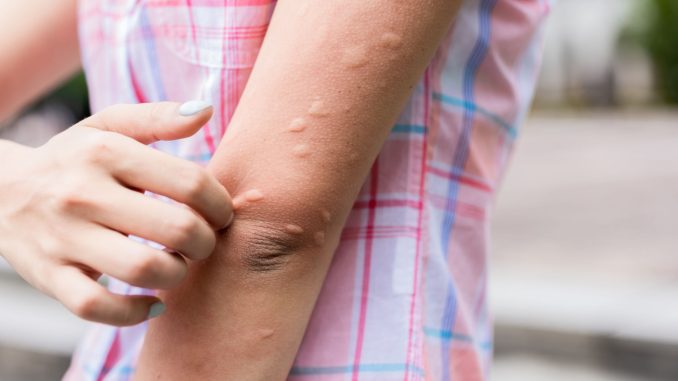
Skin fungus, also known as fungal infections or dermatophytosis, is a common condition that affects millions of people worldwide. Fungal infections can occur on various parts of the body, including the skin, nails, and hair. They are caused by the overgrowth of fungi that thrive in warm, moist environments. While fungal infections can be uncomfortable and unsightly, the good news is that there are several preventive measures you can take to reduce the risk of developing them. In this article, we will explore the reasons for getting skin fungus and provide practical tips to prevent it.
1. Moisture and Sweating: Excessive moisture and sweating create an ideal environment for fungi to grow and multiply. Activities that lead to prolonged sweating, such as wearing tight-fitting clothing, using non-breathable fabrics, or engaging in strenuous physical activities, can increase the risk of developing skin fungus. To prevent this, it’s important to keep the skin clean and dry, especially in areas prone to sweating, such as the armpits, groin, and feet. Regularly change out of sweaty clothes and use talcum powder or antiperspirants to help absorb moisture.
2. Poor Hygiene:
Neglecting proper hygiene practices can contribute to the development of skin fungus. Fungi thrive in unclean environments, so it’s important to maintain good hygiene habits. This includes washing the body with mild soap and water regularly, especially after sweating or engaging in activities that expose the skin to dirt or potential fungal sources. Pay particular attention to areas where the skin folds, as these areas are prone to trapping moisture and becoming breeding grounds for fungi.
3. Weakened Immune System:
A weakened immune system can make individuals more susceptible to fungal infections. Certain medical conditions, such as diabetes, HIV/AIDS, or autoimmune disorders, as well as certain medications or treatments (such as chemotherapy), can compromise the immune system’s ability to fight off fungal infections. To help prevent skin fungus in these cases, it’s crucial to manage underlying health conditions effectively and follow any medical recommendations provided by healthcare professionals.
4. Close Contact with Infected Individuals:
Fungal infections can spread through direct contact with infected individuals or contaminated surfaces. Close contact activities, such as sharing personal items like towels, clothing, or footwear, can increase the risk of transmission. Additionally, communal areas like public swimming pools, gyms, or showers may harbor fungi. To minimize the risk, avoid sharing personal items, maintain good personal hygiene, and consider wearing protective footwear in public areas.
5. Poor Foot Hygiene:
The feet are particularly susceptible to fungal infections, such as athlete’s foot. Poor foot hygiene, wearing damp or tight shoes, and walking barefoot in public areas can increase the likelihood of developing a fungal infection. To prevent foot fungus, practice good foot hygiene by washing feet daily, thoroughly drying them (especially between the toes), wearing clean socks made of breathable materials, and using antifungal powders or sprays if necessary.
6. Contaminated Clothing and Bedding:
Sharing contaminated clothing, bedding, or towels can facilitate the spread of fungal infections. Fungi can survive on these items and infect individuals who come into contact with them. To prevent this, ensure that clothing, bedding, and towels are washed regularly in hot water and dried thoroughly. Avoid sharing these items with individuals who have known fungal infections.
7. Environmental Factors:
Certain environments, such as warm and humid climates, can contribute to the development of fungal infections. Fungi thrive in these conditions, making it easier for infections to occur. If you live in or visit such areas, take extra precautions by keeping your skin clean and dry, wearing breathable clothing, and avoiding prolonged exposure to damp or sweaty environments.
Prevention is key when it comes to avoiding skin fungus. By following these preventive measures, you can significantly reduce the likelihood of developing fungal infections:
- Keep your skin clean and dry, especially in areas prone to sweating.
- Practice good personal hygiene, including regular bathing and washing of clothes and bedding.
- Avoid sharing personal items with others, particularly those who have fungal infections.
- Wear breathable clothing and choose moisture-wicking fabrics.
- Use antifungal products, such as powders or sprays, if necessary, especially in areas prone to fungal infections.
- Wear protective footwear in public areas like swimming pools, gyms, or communal showers.
- Maintain a healthy lifestyle, including a balanced diet, regular exercise, and sufficient rest, to support a strong immune system.
- Seek prompt treatment if you notice any signs or symptoms of a fungal infection, such as redness, itching, or skin changes.
Conclusion
Skin fungus can be prevented by practicing good hygiene, keeping the skin dry, avoiding sharing personal items, and being mindful of environmental factors. If you do develop a fungal infection, it’s important to seek appropriate medical treatment to prevent further complications and ensure a swift recovery. By taking proactive steps to prevent skin fungus, you can maintain healthy skin and enjoy a fungus-free life.
Share this:
- Click to share on Facebook (Opens in new window)
- Click to share on Twitter (Opens in new window)
- Click to share on WhatsApp (Opens in new window)
- Click to share on Reddit (Opens in new window)
- Click to share on Telegram (Opens in new window)
- Click to share on Pinterest (Opens in new window)
- Click to share on LinkedIn (Opens in new window)